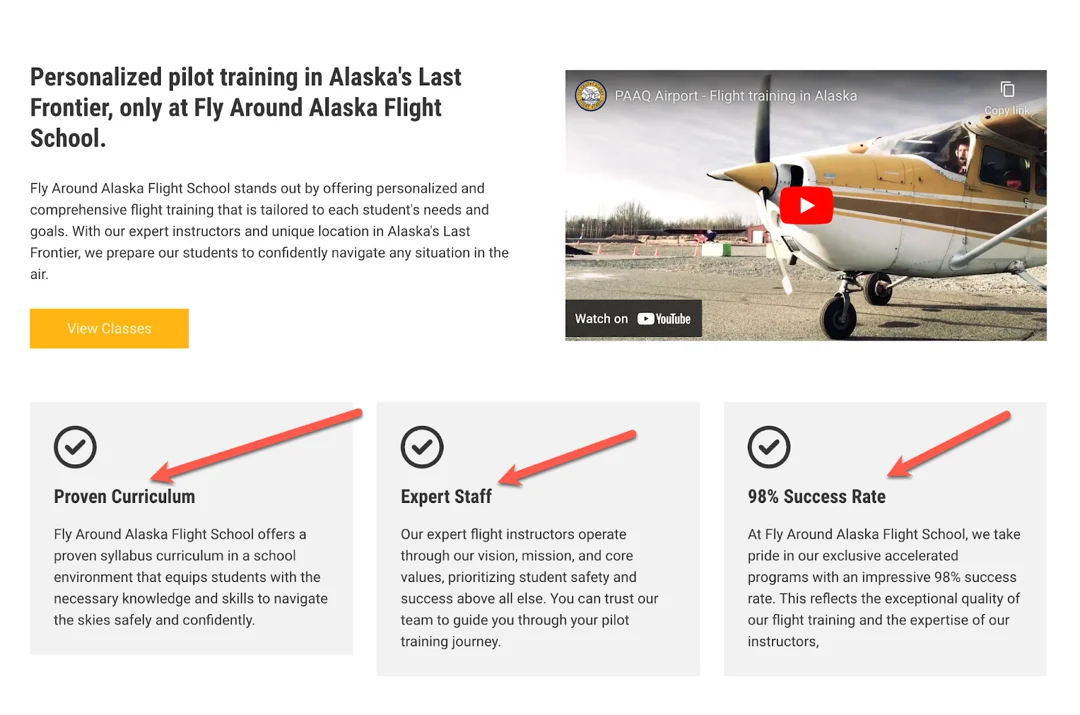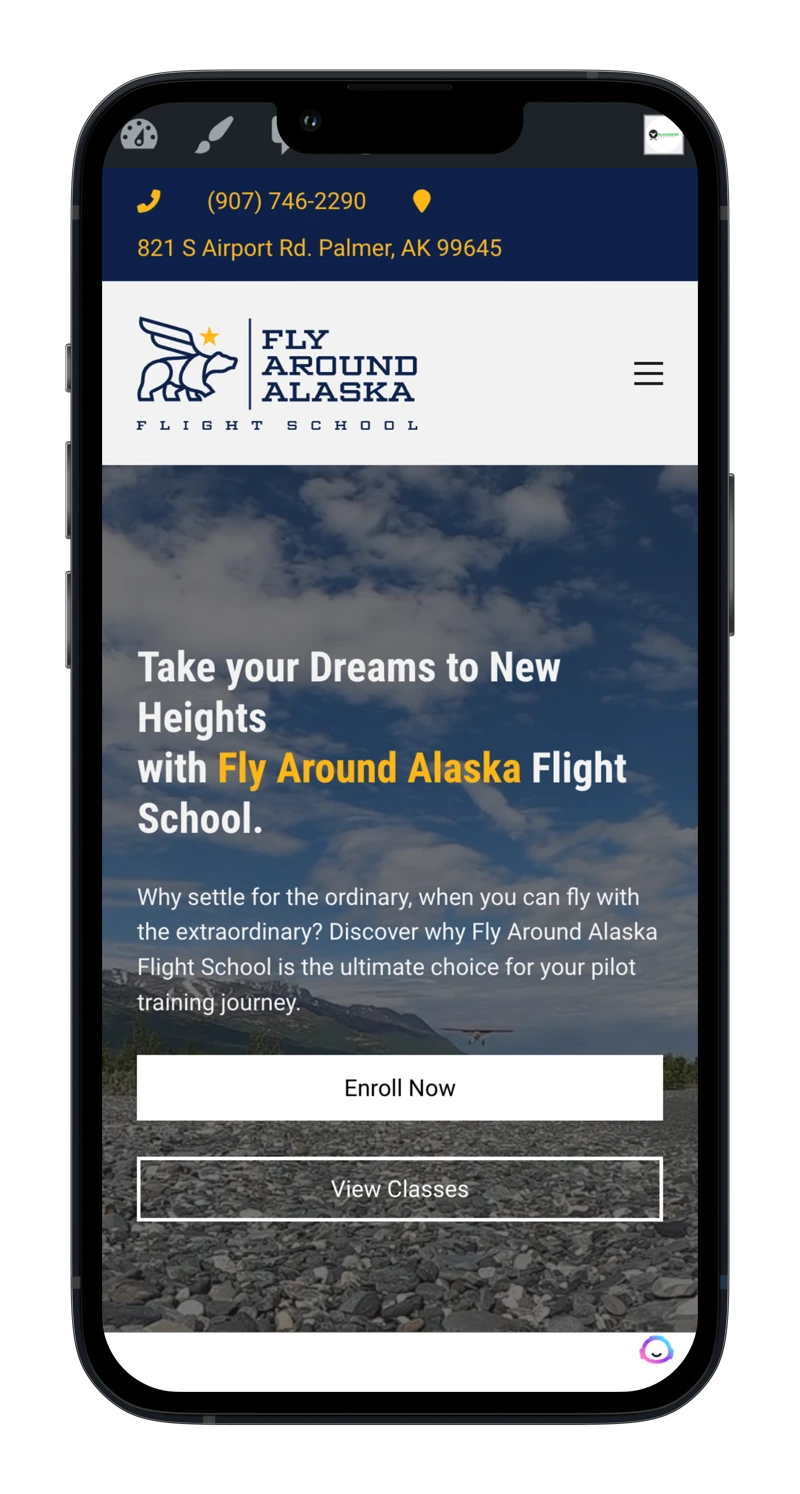Flight School Website Design Tips from the Experts
Welcome to the ultimate guide to creating a captivating website for your flight school. In today’s digital age, having a robust online presence is essential for any business, including flight schools.
In this comprehensive article, we will explore the step-by-step process of designing and developing a website that stands out and attracts aspiring pilots to your flight school. At timberRidge Solutions, we specialize in crafting captivating websites tailored for flight schools, driving success in the competitive aviation industry.
1. Understanding Your Target Audience
Before diving into the design and development process, it’s crucial to understand your target audience. Identify the needs and preferences of aspiring pilots and tailor your website to address their specific requirements.

2. Defining Your Unique Selling Proposition (USP)
What sets your flight school apart from others? Define your unique selling proposition and highlight it on your website. Whether it’s state-of-the-art training facilities, experienced instructors, or a high success rate, make sure your USP is clear and compelling.
3. Choosing the Right Domain Name
Selecting the right domain name is crucial to your website’s success. Opt for a domain name that is easy to remember, relevant to your flight school, and incorporates your focus keyword, “flight school website design.”
In the context of these evolving online strategies, it’s important to consider how broader changes, like the deactivation of Google Business Profile websites, might impact your digital presence.

4. Crafting an Engaging Homepage
Your website’s homepage is the first impression potential students will have of your flight school. Create a visually appealing, user-friendly homepage showcasing your USP and capturing visitors’ attention.
5. Building Intuitive Navigation
Ensure that your website has straightforward and intuitive navigation. Visitors should be able to find essential information, such as courses offered, contact details, and pricing, with ease.
6. Showcasing Flight School Facilities
Include high-quality images and videos of your flight school facilities, aircraft, and flight training in action. Visual content will give potential students a glimpse of the experience they can expect.
7. Testimonials and Success Stories
Feature testimonials from past students and success stories of pilots who trained at your flight school. Positive reviews build trust and credibility, encouraging more aspiring pilots to enroll.

8. Mobile-Responsive Design
In today’s mobile-driven world, having a mobile-responsive website is non-negotiable. Ensure that your website looks and functions seamlessly on various devices.
9. Integrating Booking and Inquiry Forms
Make it easy for potential students to book trial flights or make inquiries. Integrating user-friendly forms will enhance the user experience and increase conversion rates.
10. Search Engine Optimization (SEO)
Optimize your website for search engines to improve its visibility in search results. Focus on relevant keywords, meta tags, and quality content to rank higher and attract more organic traffic.
11. Blog Section for Valuable Content
Include a blog section on your website to share valuable aviation and flight training content. Regularly updating your blog with informative articles will establish your flight school as an industry authority.
12. Social Media Integration
Connect with your audience through social media platforms. Integrate social media buttons on your website to encourage sharing and engagement.
13. Emphasizing Safety and Accreditation
Safety is paramount in the aviation industry. Highlight your flight school’s safety measures and any accreditations or certifications you hold.
14. Clear Calls-to-Action (CTAs)
Strategically place clear and compelling calls-to-action (CTAs) throughout your website. Encourage visitors to take specific actions, such as scheduling a tour or enrolling in courses.
15. Regular Updates and Maintenance
A well-maintained website is a reflection of your flight school’s professionalism. Ensure regular updates, security checks, and maintenance to keep your website running smoothly.
Conclusion
Congratulations! You now have a comprehensive guide to creating a captivating website for your flight school.
By understanding your target audience, defining your unique selling proposition, and following the steps outlined in this article, you are well on your way to standing out in the competitive aviation industry.
Remember, at timberRidge Solutions, we are here to support you in designing and developing a website that elevates your flight school’s online presence and attracts aspiring pilots. Contact us today to get started on your journey to success!
FAQs (Frequently Asked Questions)
1. How long does designing and developing a flight school website take?
The timeline for designing and developing a flight school website may vary depending on the project’s complexity. Typically, ensuring a high-quality and user-friendly website can take several weeks to a few months.
2. Can timberRidge Solutions help create content for our flight school website?
Absolutely! At timberRidge Solutions, we offer comprehensive website design and development services, including content creation. Our team of expert content writers can craft engaging and SEO-optimized content for your flight school website.
3. What sets timberRidge Solutions apart from other web development agencies?
timberRidge Solutions specializes in creating tailor-made websites for flight schools, focusing on the aviation industry’s unique requirements. Our team has extensive experience building captivating websites that drive results and stand out from the competition.
4. Do I need a separate mobile website for my flight school?
No, a separate mobile website is not necessary. With a mobile-responsive design, your website will adapt seamlessly to various screen sizes, providing an optimal user experience on desktop and mobile devices.
5. How can I track the performance of my flight school website?
You can use web analytics tools like Google Analytics to track your website’s performance. These tools provide valuable insights into website traffic, user behavior, and conversion rates, helping you make data-driven decisions to improve your site’s effectiveness.

